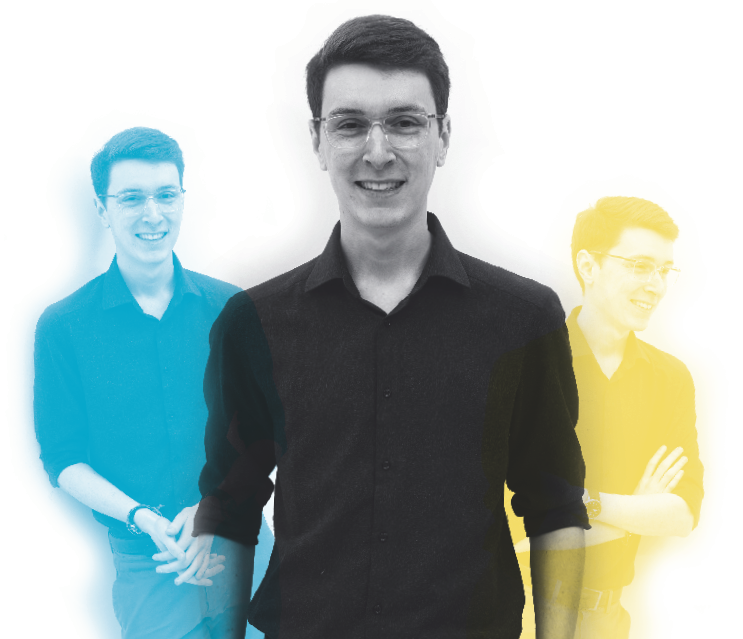
Final year project
Improving the safety and sustainability of household cleaning and disinfection with… [Read more]
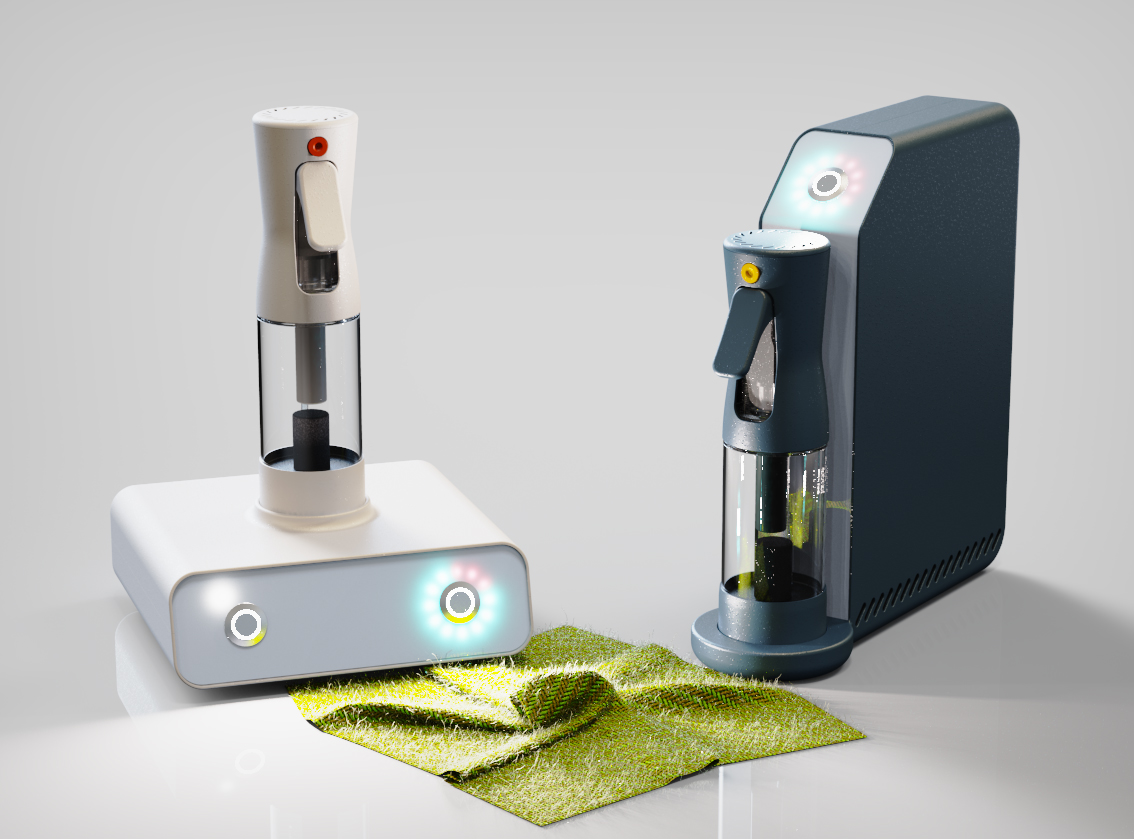
Bubbl - final year design practice project
Chemical cleaners in homes have the potential to cause serious health problems with long-term use, especially to the lungs. Their production, packaging and shipping can also have notable environmental impacts.
Ozonated water is a safe and powerful antibacterial and antiviral agent, and when applied in a home cleaning context allows users to safely clean and disinfect surfaces without relying on disposable products or common cleaning chemicals. It can also be applied as a skin-friendly handwashing agent, offering potential extra avenues of use during the current COVID-19 pandemic alongside use as a surface cleaner.
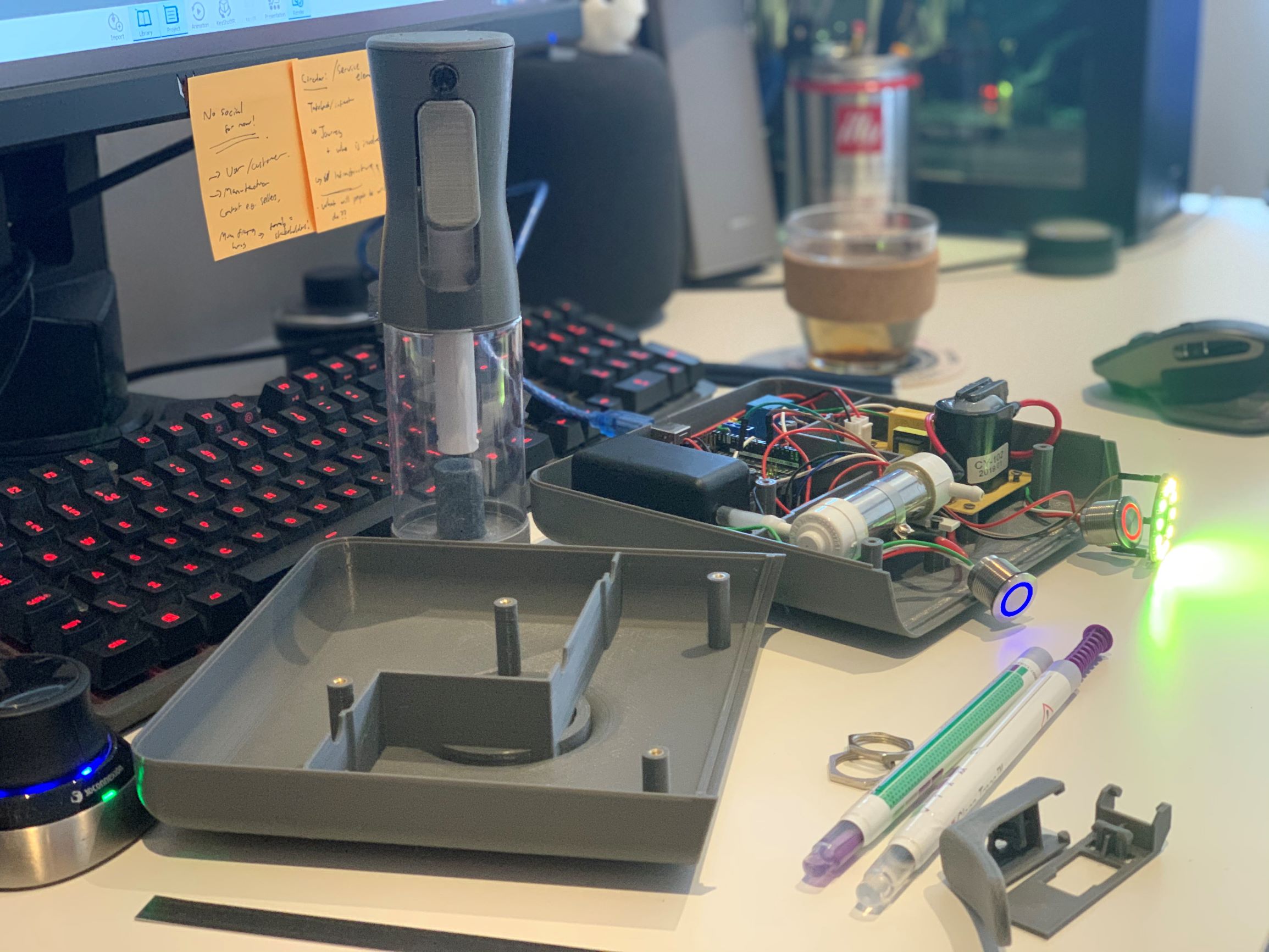
3D-printed functional prototype
3D-printed parts allowed me to fit and test real components in the form factor of the product, and to more easily consider manufacturing issues. A pump moves air into an ozone generator tube, that uses a high voltage spark to create ozone from the oxygen in the air. This is then passed through a check valve to an air stone in the detachable bottle above.
An Arduino was used to prototype the interface, resulting in a streamlined one/two button solution with LEDs and a buzzer providing simple and easy-to-understand timer feedback.
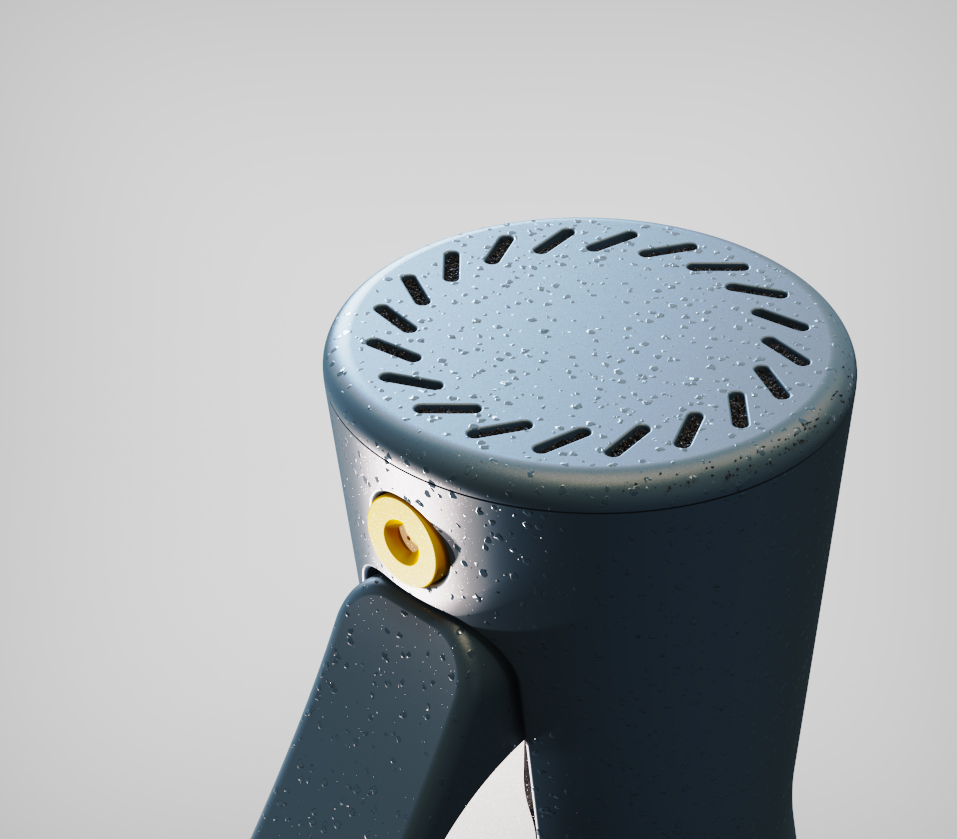
Spray bottles
Bubbl has two form factors - seen in the first image. One larger, housing a bigger ozone generator and pump that allows users to swap the spray bottle pictured for a larger container. This allows greater quantities of ozonated water to be quickly created for use in cleaning toilets or sinks, or for sterilizing microfibre cloths after use. The second, slimmer unit is intended for smaller houses and kitchens, or as a secondary unit, only for use with the standard spray bottle. Both containers feature vents with ozone destruct catalysts present, to ensure no residual ozone gas enters the environment.
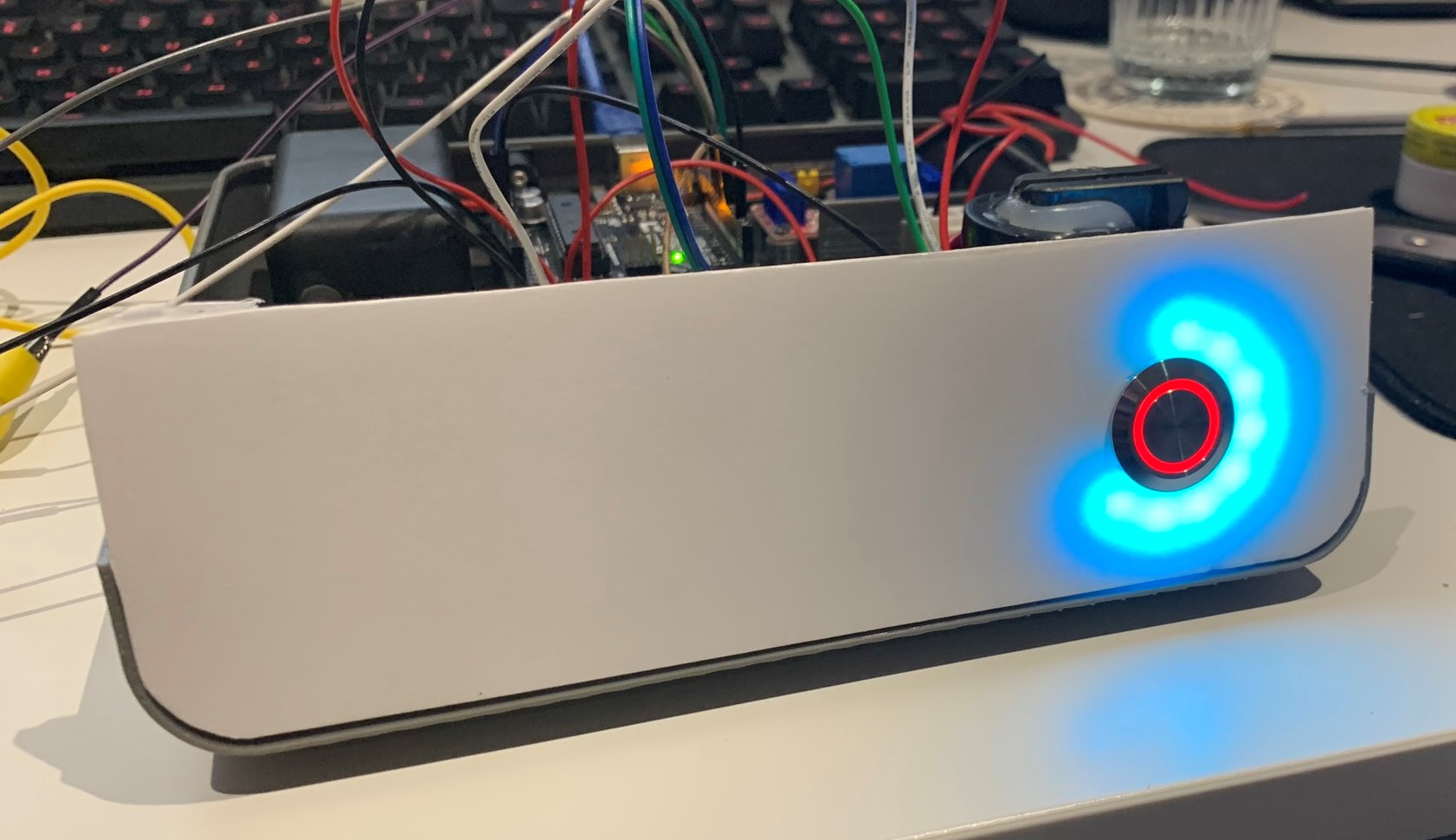
Interface testing
The interface was intended to be extremely simple and timeless. Touchscreens or displays can often feel dated or clunky a few years after introduction, and felt unnecessary given the low levels of required feedback for the design. Keeping the product in service as long as possible can help reduce its environmental footprint.
This was aided by using medical-grade capacitive buttons - that work through gloves or with wet hands - with no moving parts. The LED ring interface indicates the time required to ozonate the water (around 60s for a 160ml spray bottle), and then provides further feedback on the time until the ozone in the water dissipates.
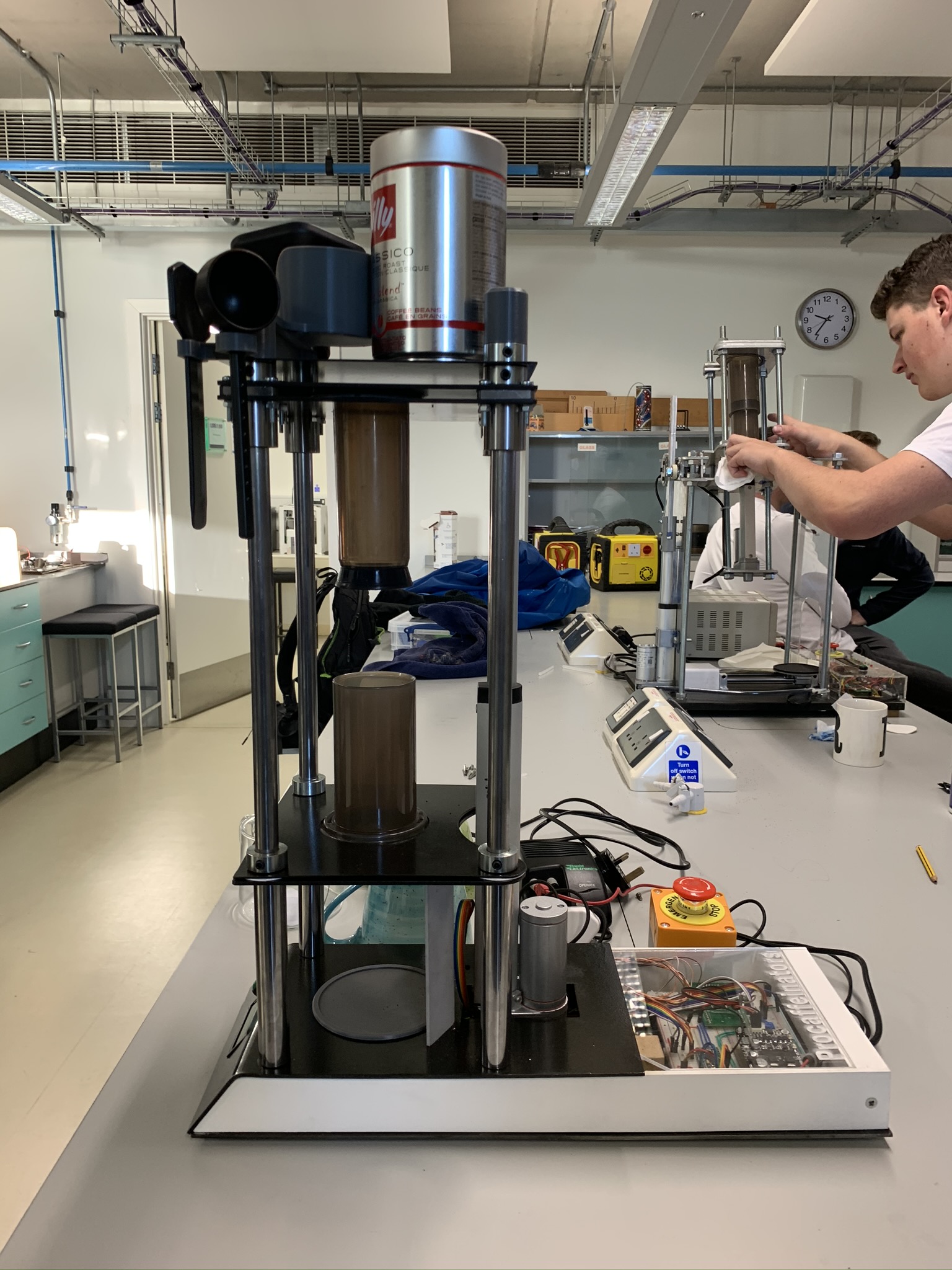
Aeropress coffee machine
Developed as part of the Applications of Mechanics and Electronics for Design module, the brief being to create an electro-mechanical system capable of automating the process of brewing an AeroPress coffee. My design, seen above, was selected by the group to manufacture, and incorporated an RFID reader with accompanying 'Smart Mugs', allowing the machine to brew a different strength of coffee depending on which cup was placed on the pad. This project was a great challenge, with an extremely satisfying outcome!
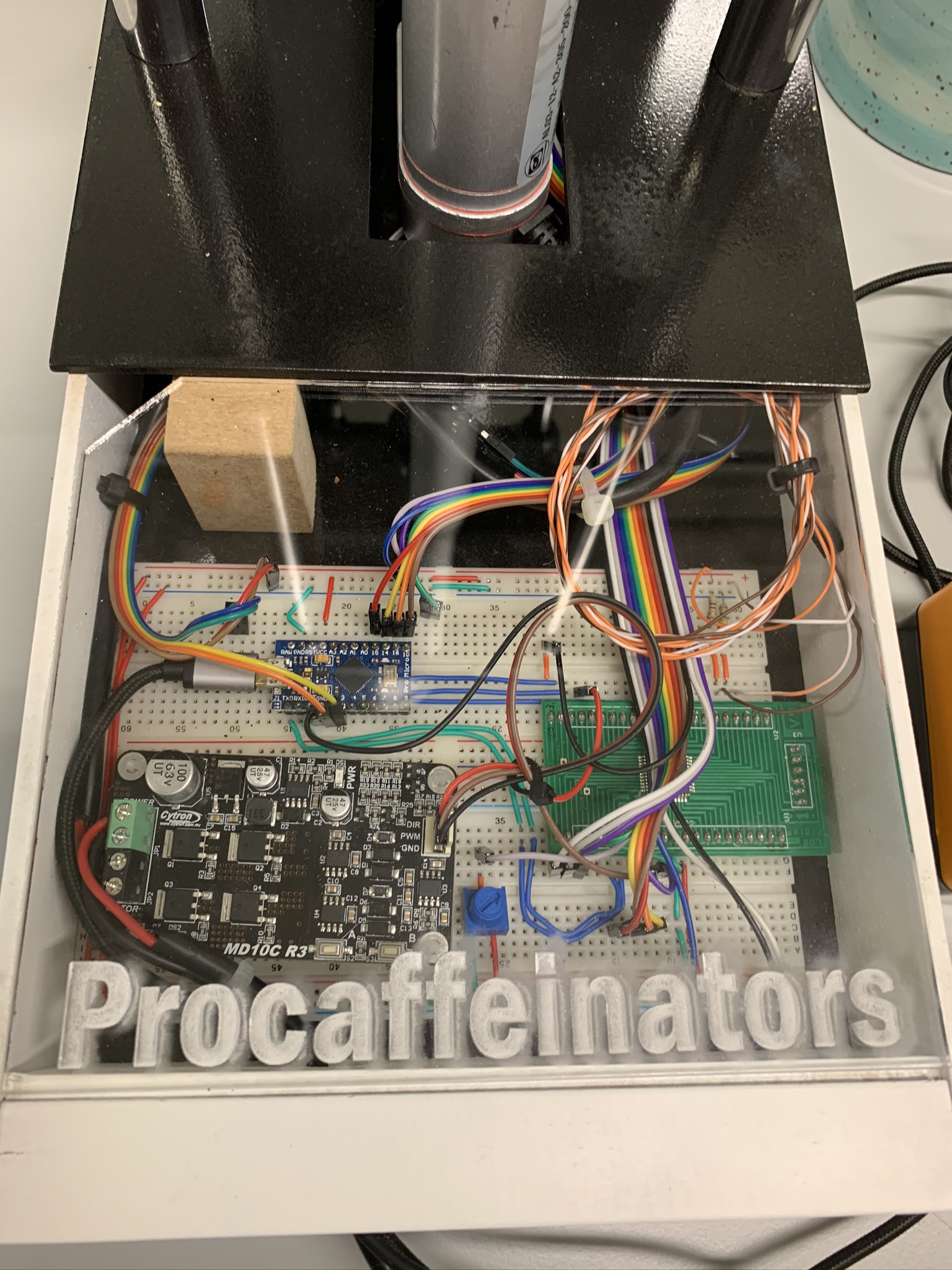
Coffee machine electronics
Alongside the RFID reader, the machine uses a contactless IR temperature sensor to tell the user the temperature of their mug - reducing the potential for burns or scalds.
I enjoyed working on the electronics of this project - interfacing the RFID and Temperature Sensors with the provided PIC chip proving the main challenge. In the end and after several attempts, an Arduino Pro Micro was used to interface the sensors with the PIC via UART.
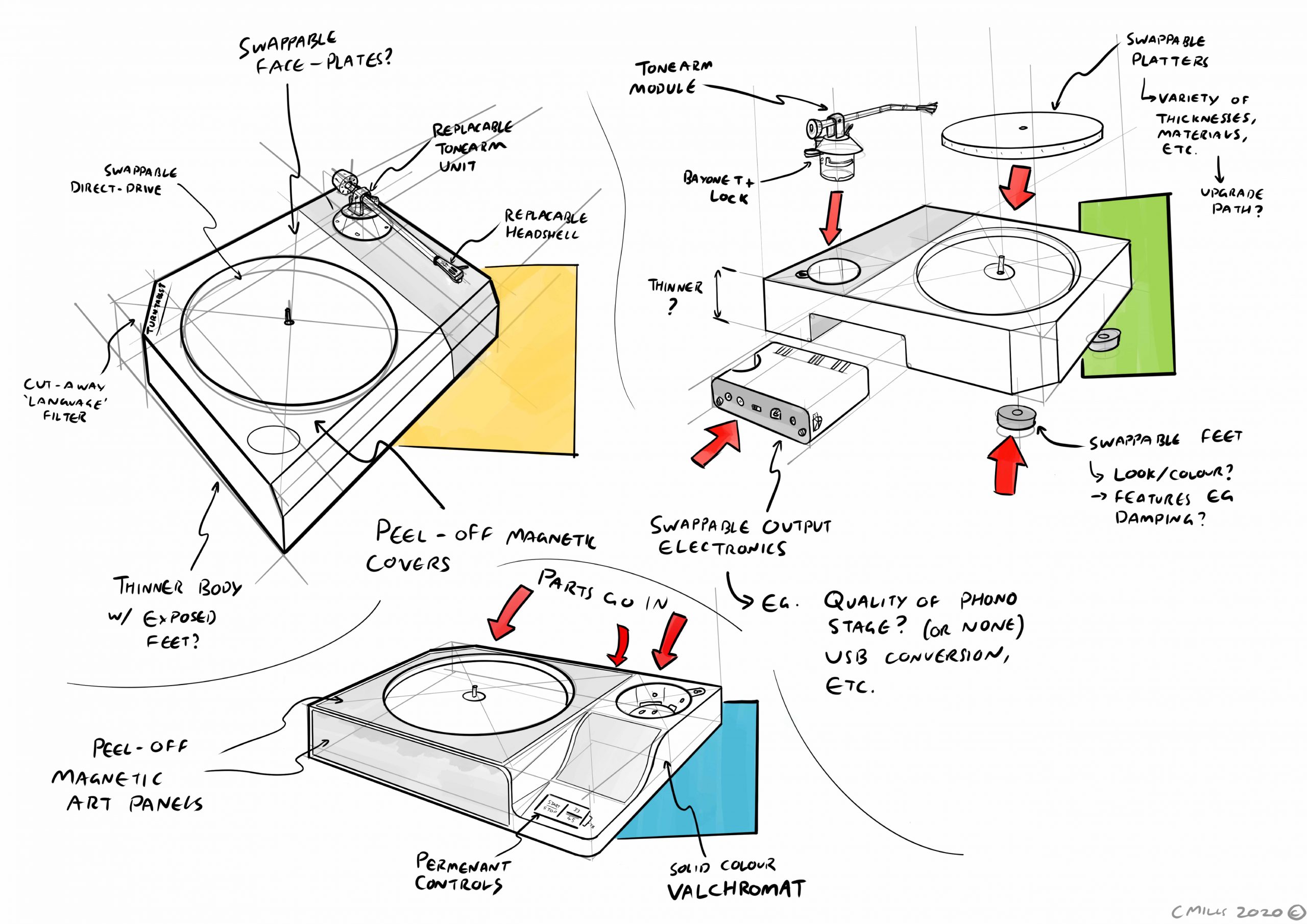
Vinyl_st - design week project
Responding to a brief aimed at adding useful modularity to a household item, I decided to focus on turntables. Like many hobbies, equipment is important, but the current default option is often to buy a whole new turntable. Vinyl_st allows users to swap only the parts of their turntable that might need upgrading, or to change its look. Think skins, platters, tonearms and preamps! It also encourages a circular approach to upgrading, with users returning their old components to the manufacturer for a discount on their upgrade. These can then be refurbished and returned to the market for new users.
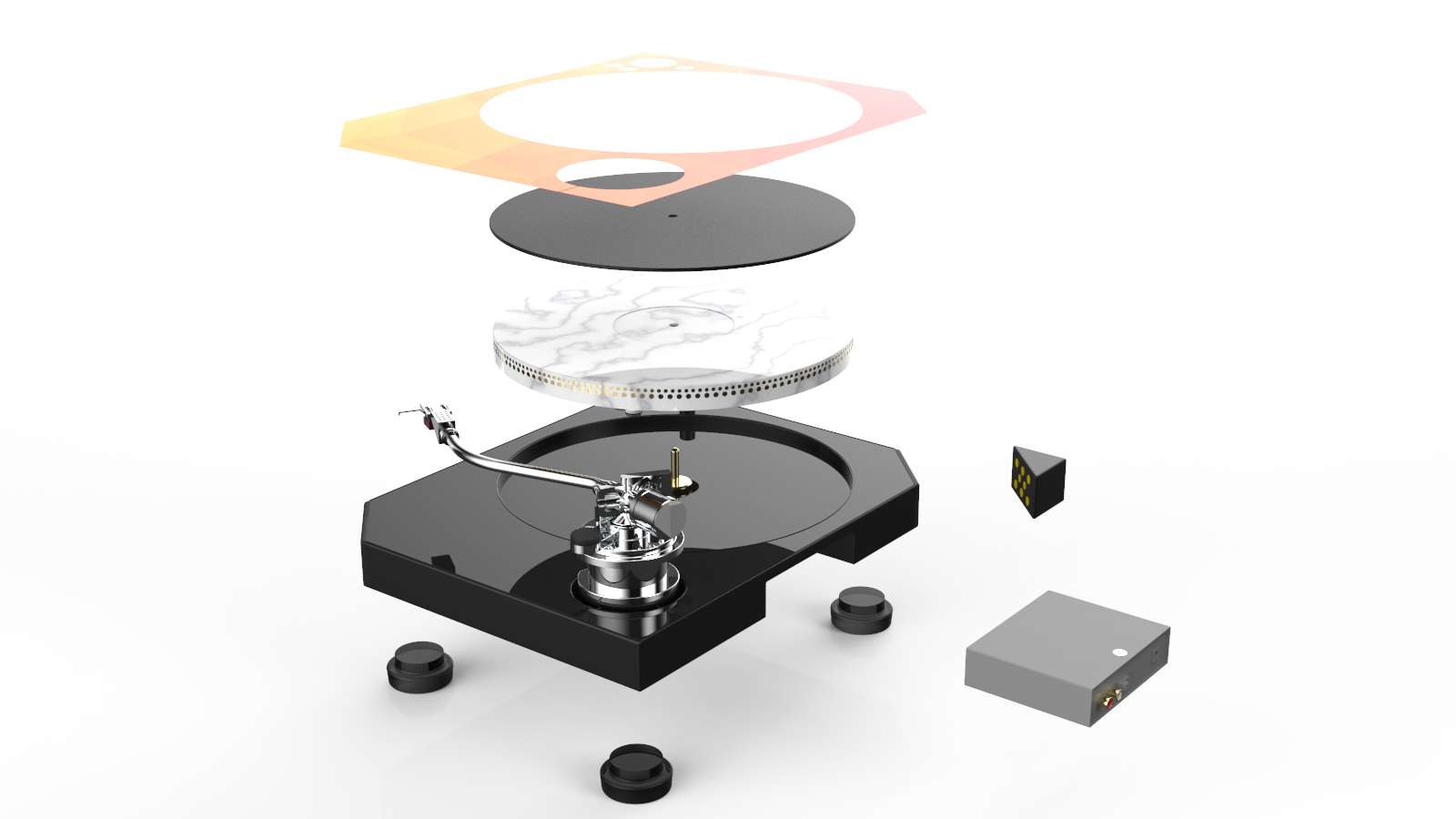
Vinyl_st modularity
Some of the modular parts can be seen here - the direct-drive motor and solid MDF base are common to all setups. The platter, slipmat, buttons and magnetic skins can be changed out easily, and a bayonet-fit tonearm allows bigger upgrades to be made quickly. The output box at the rear of the unit allows users to choose an integrated preamp to match their budget, or if they already own an external preamp they can save some money by only buying a passthrough unit!
The chamfered corners house magnetic contacts that allow for easy expansion of functionality. Potential applications of this include a Bluetooth/Airplay expansion, front-side headphone output, a snap-on pitch shifter for DJ duty or straightforward connections to compatible amps and mixers.
Calum Mills
I love challenging briefs and tasks, and the opportunities these can provide for learning and improving as a designer! I enjoy 3D printing, tinkering and figuring out how things work!
Usually when working I'll focus on how the thing works, where the parts will go and how the whole thing will fit together - it'd be fair to say my major project follows this philosophy, but in the past year I've been starting to look at projects from other angles and am finding myself improve as a result!
I'd love to build a career in design or design engineering, somewhere that I can be involved in a product from brief to production. As long as what I'm doing is useful, interesting and somewhere fun I'll give it a go!
I've lived and worked in China, and I've been the programme representative for the BSc Product Design course in both second and final year - thankfully enjoying the extra responsibility this brings!
Final year project
Improving the safety and sustainability of household cleaning and disinfection with ozonated water
Awards
'20 Diploma in Professional Studies
Awarded 'Best Branding' as part of the YET Initiative UXathon in 2017, for client 'MiCos' - an augmented reality cosmetics app allowing users to see themselves wearing products before purchasing them. Deliverables included an app prototype, logo, brand identity and social media templates.
Placements
July 2018 - July 2019
Design Engineer (Placement), Bristan Group